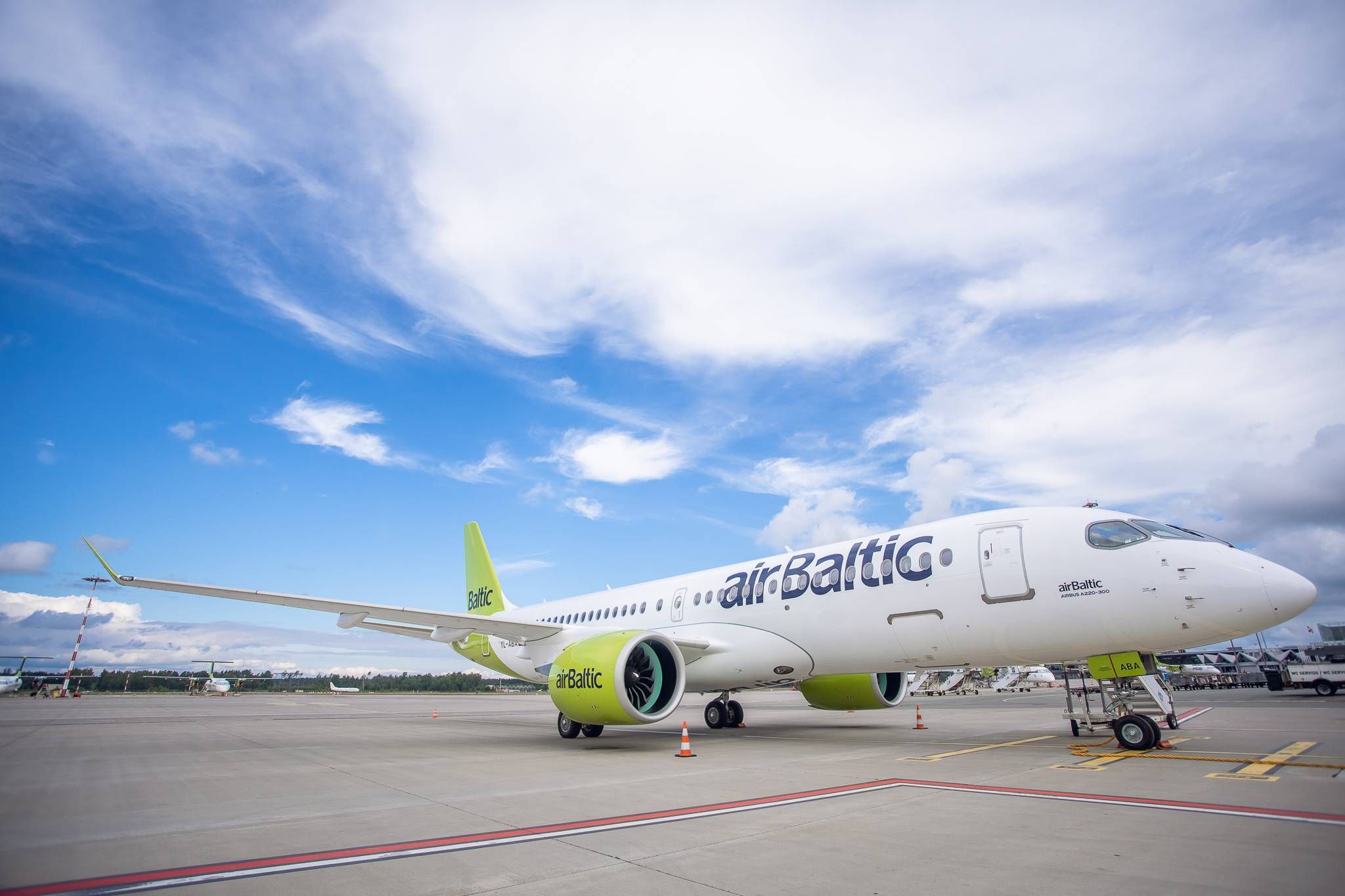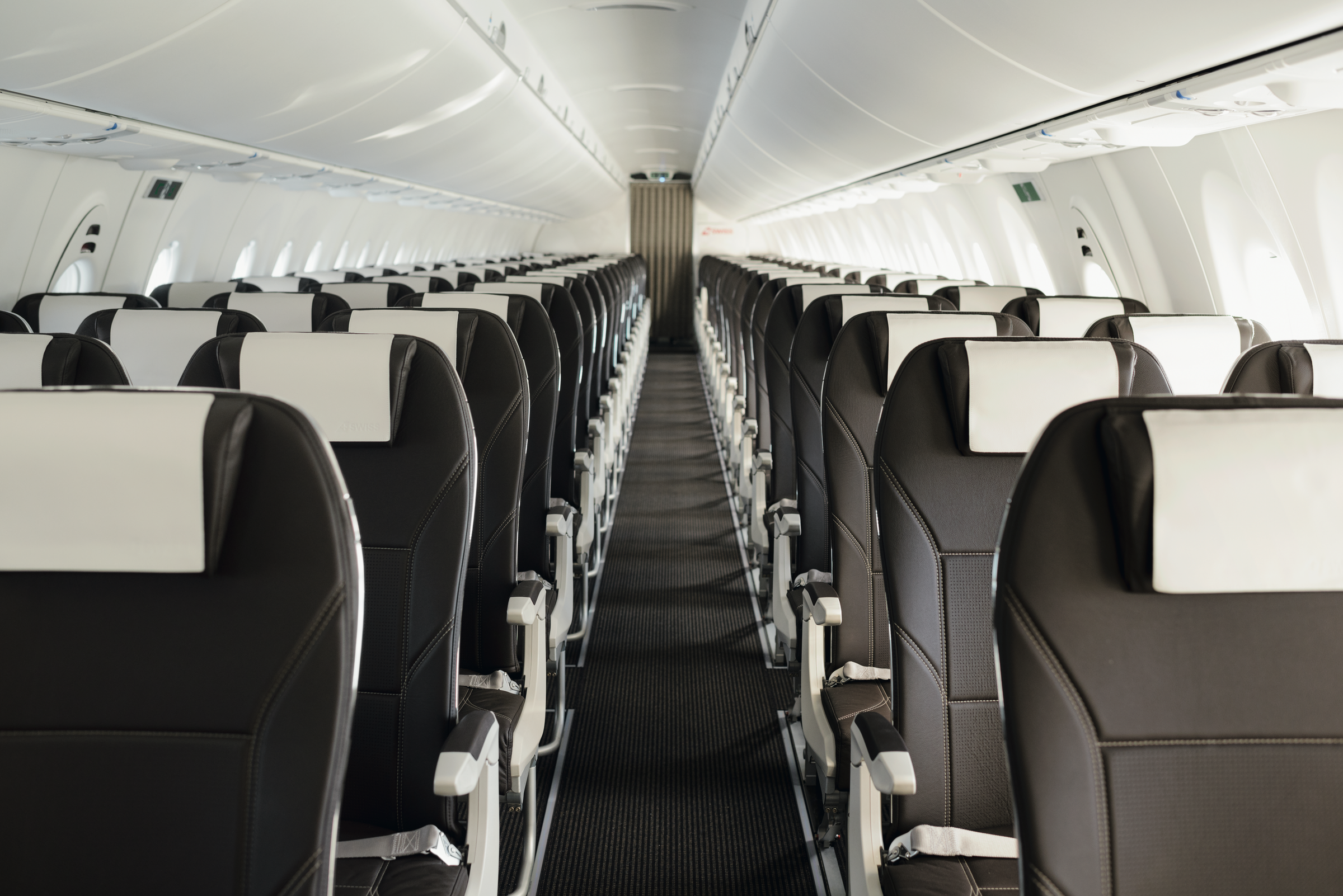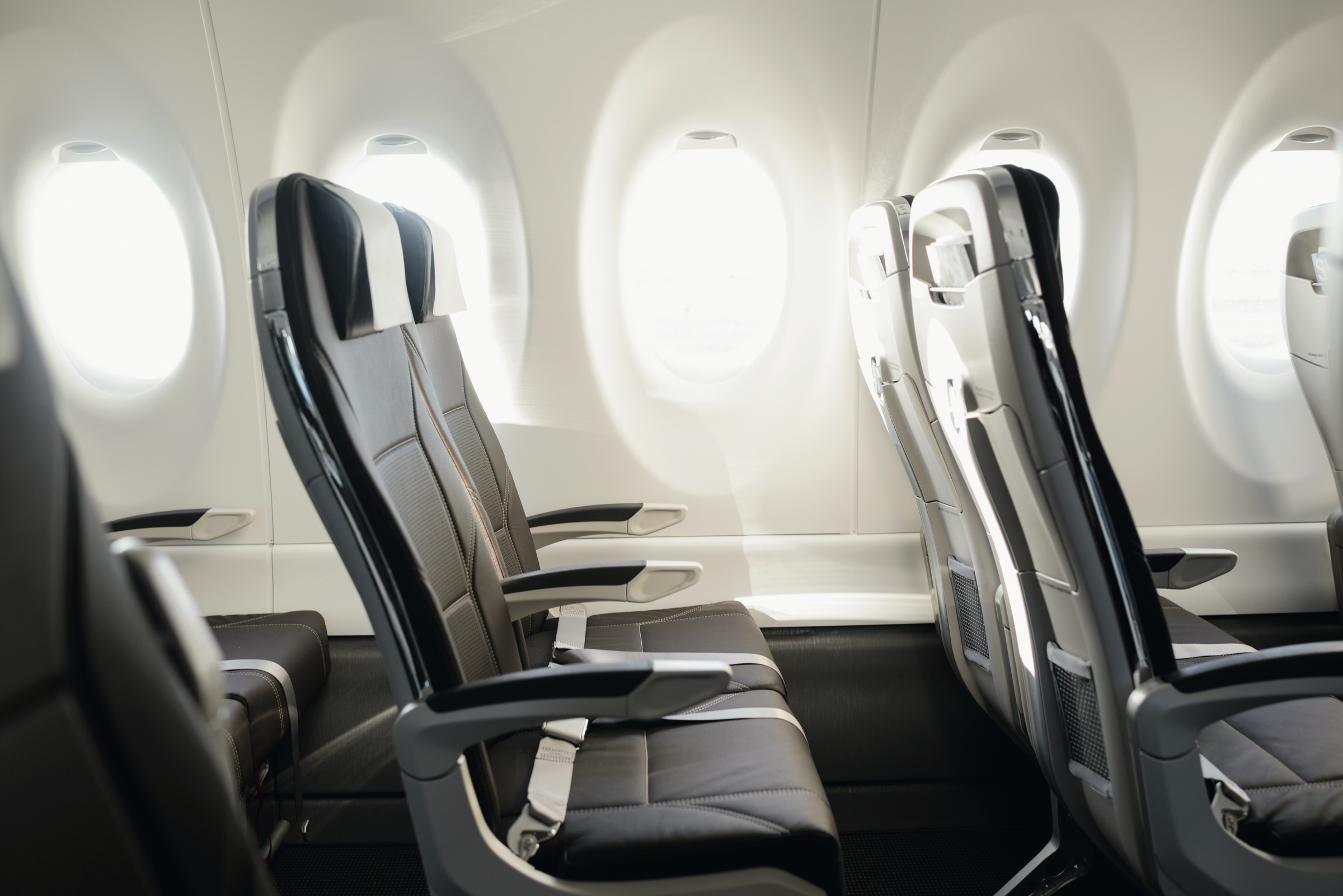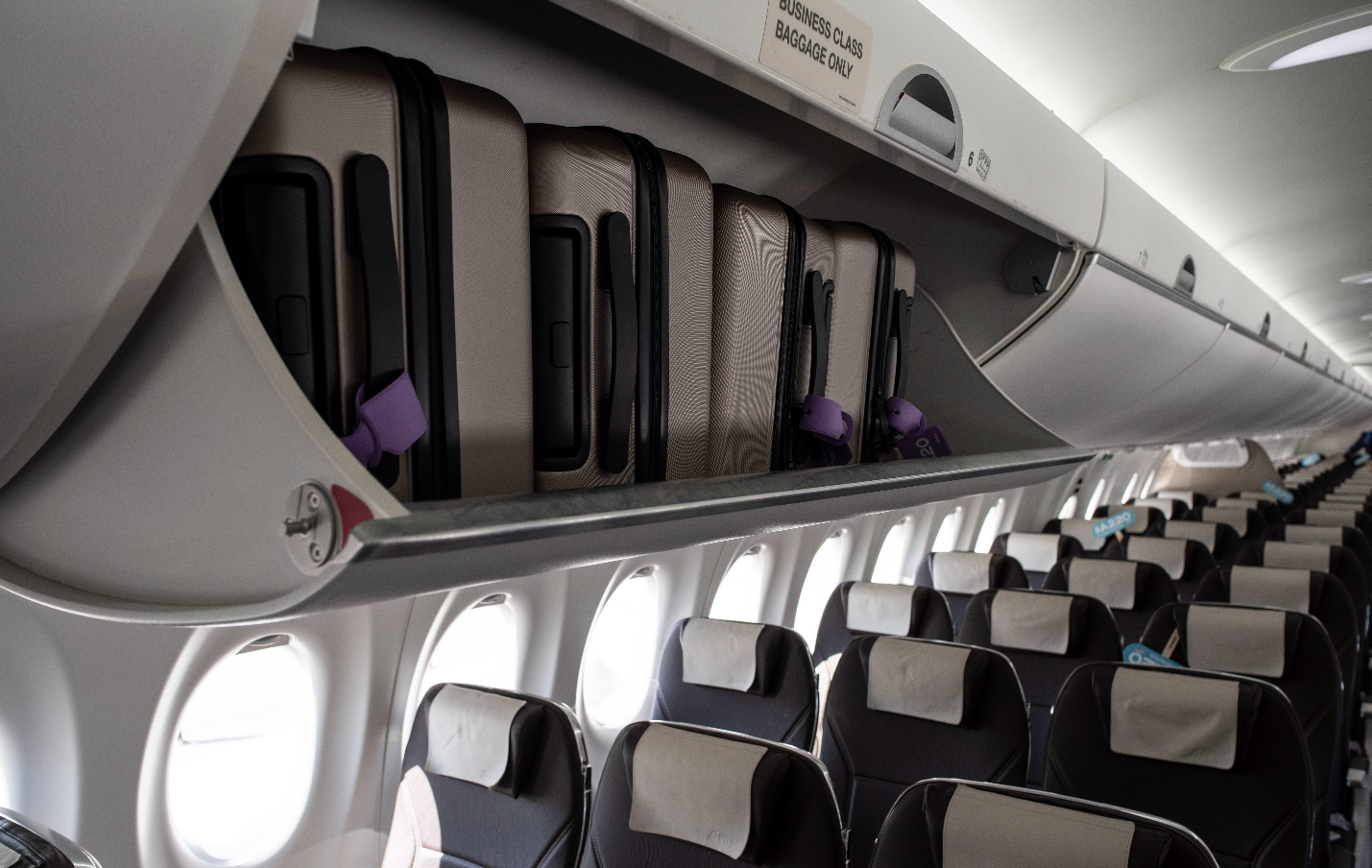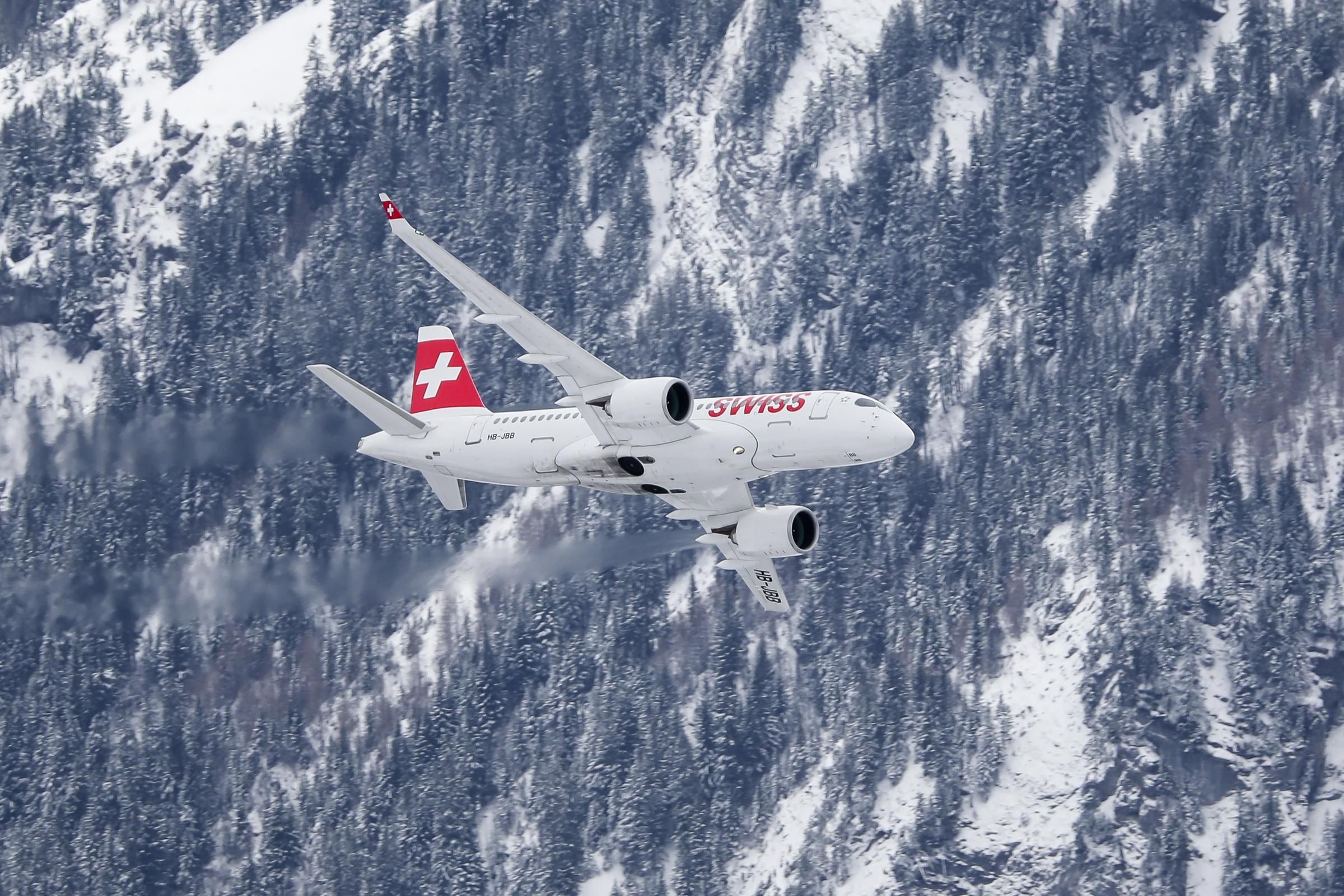Before we describe what makes the Airbus A220 "Air Space" cabin better than that on similarly sized aircraft, let's first look at the Airbus A220 and see how it came to be. Initially developed by Canadian aircraft manufacturer Bombardier as the Bombardier CSeries, the plane was meant to replace older DC-9/MD-80, Fokker 100, and Boeing 737 Classic aircraft.
Two different launch customers
The CS100 offers five abreast seats for 110 to 115 people, with the larger variant, the CS300, providing seating for up to 160 passengers.
The CS100 made its maiden flight in September 2013 and was awarded its type certification by Transport Canada just over two years later, in December 2015. The larger CS300 made its maiden flight in February 2015 and received its Transport Canada certification in July 2016.
Swiss Global Air Lines was the launch customer for the CS100 and saw the plane enter commercial service in July 2016. The CS300 entered commercial service with the launch customer airBaltic in December 2016. Today airBaltic has an all-Airbus fleet made up of 40 aircraft.
Airbus gets involved in the CSeries program and eventually acquires Bombardier
Facing stiff competition, production delays, and financial worries, Bombardier reached out to European plane maker Airbus. On October 16, 2017, Bombardier announced that Airbus would become the main shareholder with 50.01% while Bombardier would retain 31% and the province of Quebec 19%. Production of the CSeries would remain in Quebec, and Airbus would also open a second assembly plant in Mobile, Alabama, for its American CSeries customers.
The CS100 and CS300 were designed with passengers' comfort in mind
In January 2020, Bombardier sold its stake in the CSeries program to Airbus, who immediately rebranded the plane as the Airbus A220.
From the very get-go, Bombardier wanted to build a narrowbody aircraft with a widebody feel. To accomplish this, they made the aisle larger, fit wider than average seats with a width of up to 19 inches, and, most importantly, added large windows. In addition to the natural light that floods the plane from those windows, the aircraft also has LED 'well-being' ambient lighting.
The Airbus A220 also offers overhead bins that are 20% larger than on rival aircraft allowing every passenger, even on a full flight, to accommodate their carry-on roller suitcase. Airlines operating the Airbus A220 have found that the wide aisle and oversized bins have helped improve their turnaround times. Another big plus to the Airbus A220 is that it has large spacious lavatories that wheelchairs can also access.
The Airbus A220 is powered by two super-efficient Pratt & Whitney GT engines specially developed for the aircraft. With a bypass ratio of 12:1, they are among the highest of any turbofan currently manufactured. The engines are also extremely quiet, which helps eliminate cabin noise, which many passengers comment on.
You can fly on an Airbus A220 with the airlines listed below:
|
Carrier |
Number of A220s |
|
Air Austral |
2 |
|
Air Canada |
33 |
|
Air France |
22 |
|
Air Tanzania |
4 |
|
airBaltic |
40 |
|
Breeze Airways |
12 |
|
Delta Air Lines |
60 |
|
EgyptAir |
12 |
|
Iraqi Airways |
4 |
|
ITA Airways |
4 |
|
JetBlue |
16 |
|
Korean Air |
10 |
|
SWISS |
30 |
Sources: Airbus and ch-aviation.

